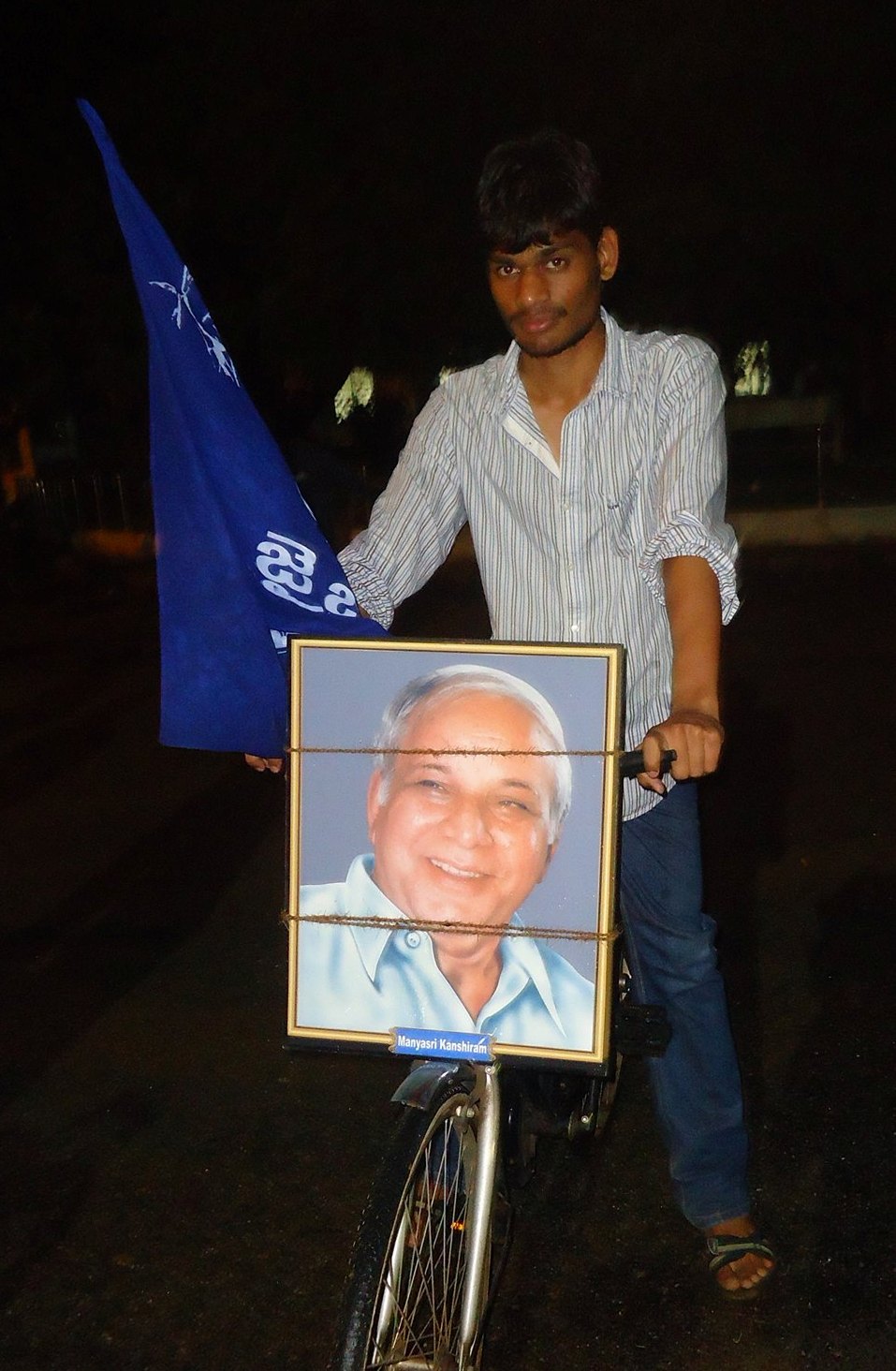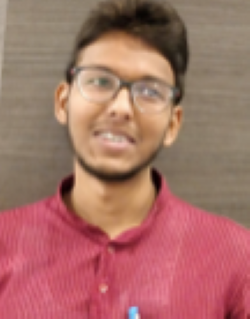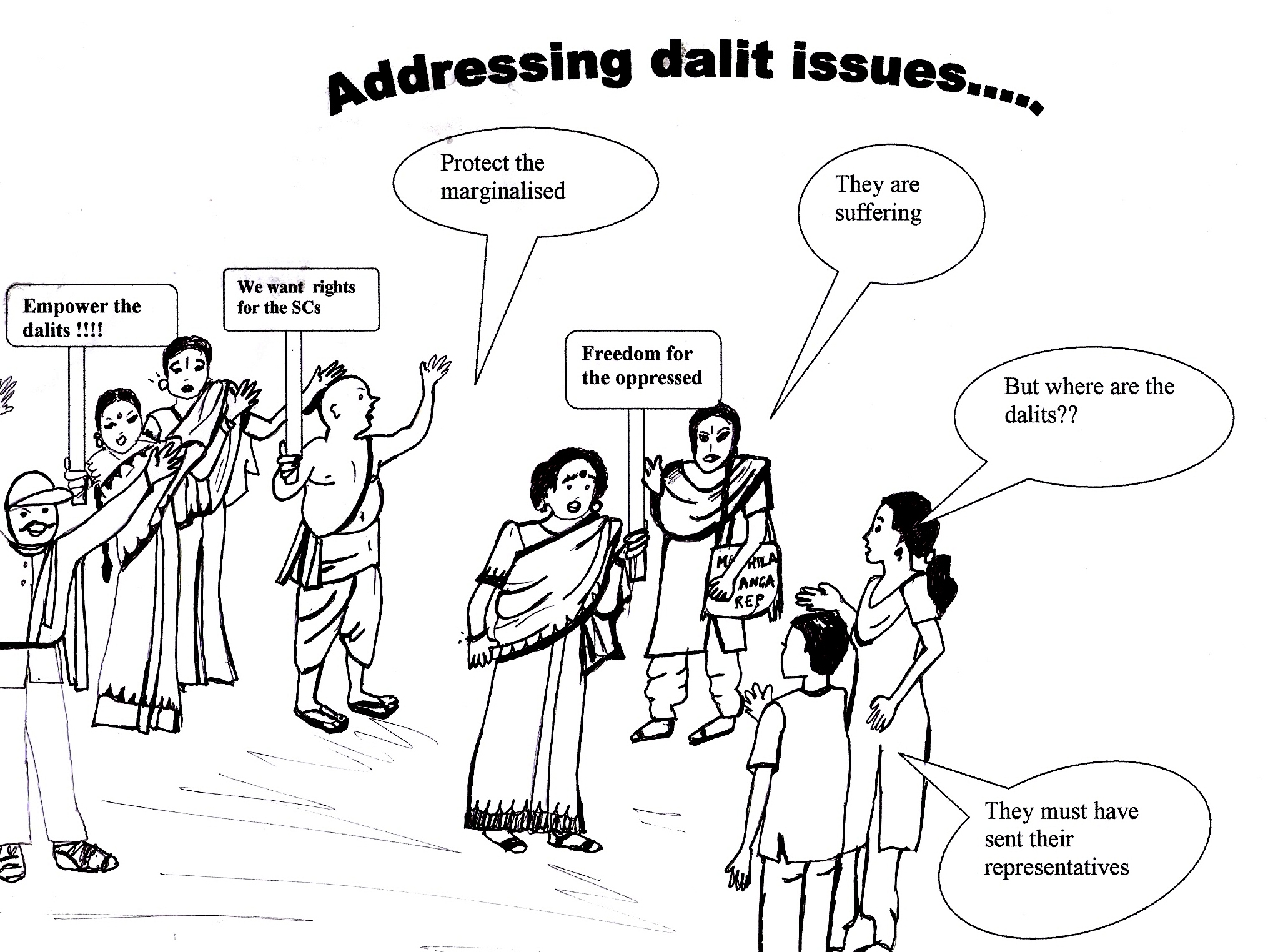P. Manikanta
“Virtue has become caste-ridden and morality has become, caste- bound.” ~ Dr. B. R. Ambedkar
 The Patna high court verdict on the Laxmanpur Bathe massacre has once again made the Bahujans think about the Brahminical state which is actively preventing India from achieving the state of democracy that had prevailed in Buddhist India. Post-Independence India has seen numerous atrocities and incidents of violence on the Bahujans (SC/ST/OBC/Religious Minorities) which ignited anger and spawned agitations. Kilvenmani, Belchi, Morichjhanpi, Karamchedu, Chunduru, Melavalavu, Kambalapalli, Jhajjar, Khairlanji, Laximpeta incidents have revived the primordial punishments to the marginalized sections that “Manu” and his successors had ordained in the malicious Shastras.
The Patna high court verdict on the Laxmanpur Bathe massacre has once again made the Bahujans think about the Brahminical state which is actively preventing India from achieving the state of democracy that had prevailed in Buddhist India. Post-Independence India has seen numerous atrocities and incidents of violence on the Bahujans (SC/ST/OBC/Religious Minorities) which ignited anger and spawned agitations. Kilvenmani, Belchi, Morichjhanpi, Karamchedu, Chunduru, Melavalavu, Kambalapalli, Jhajjar, Khairlanji, Laximpeta incidents have revived the primordial punishments to the marginalized sections that “Manu” and his successors had ordained in the malicious Shastras.
Casteist India has established its “societal principles” on the grounds of prejudice, hatred and subordination. These principles are a result of “established” sanctified dharmas. Socio-economic-political-cultural spaces uphold the sanctified notion of “purity” by ostracizing the Bahujans. The process of de-humanization in Indian society has been going on since time immemorial. This process can be traced back to the introduction of the constitution of the Brahminical hoodlums i.e. Manudharma Sastra. Studying/citing Manu in the modern period may be seen as worthless by the so-called intelligentsia but it is a primary prerequisite to identify the root cause of the problem in order to re-construct the inegalitarian social order. So, I am making an attempt to understand the Indian Social Order. In this attempt I am mostly influenced by the Ambedkar School of Thought (hereafter AST) which identifies the root cause of the problem first and then attempts to find a systematic solution to annihilate the problem.
AST is becoming a pioneering philosophical understanding in modern India by rejuvenating Dr. Ambedkar’s vision of egalitarianism. AST’s vision of social reconstruction depends upon the right understanding of the relation of the individual to society. The Law of Brahminical India, or the Manusmriti, was/is avowedly based on inequality and in this context the struggle of Dr. Ambedkar ‘against such misogynistic institutions which de-humanized India’ occupies an unique position. Emphasizing on Manu’s relevance in the formulation of what can only be called the “doctrine of holocaste” (destruction or slaughter of people on a mass scale in the name of caste, as had happened during the holocaust in Europe) in modern India, Dr. Ambedkar says “It might be argued that the inequality prescribed by Manu in his Smriti is after all of historical importance. It is past history and cannot be supposed to have any bearing on the present conduct of the Hindu. I am sure nothing can be greater error than this. Manu is not a matter of the past. It is even more than a past of the present. It is a ‘living past’ and therefore as really present as any present can be.”

Selective Violence
Selective violence in Indian society is institutionalized through religious sanctions and political monopolization. Selective violence mainly refers to the manifestation of violence which is caste-ridden and gendered in nature. Frank Wright’s “representative violence” can be remembered when we are talking of selective violence. As we know the atrocities against Bahujans (especially the Scheduled Castes, Scheduled Tribes and Minorities) are increasing day by day and the rights of weaker sections is being neglected by the Brahminical Indian state. Though our society is not considered as a deeply-divided society by the comparativist scholars, the unequal enforcement of law resorted to in India, by the dominant community, in order to maintain its position above the subordinate community is the same as in a deeply divided society.
Monopolization of the sanctified authority has its roots in the Hindu religious scriptures and the manifestation of selective violence is explicitly traced back to the killing of Shambuka in Rama Rajya and also to the killing of Asura kings which arejustified in the name of good winning over evil. Selective violence is dangerous to democracy because the productive masses/communities of the society (I) will be victimized in the name of caste (ii) the whole economic structure of (productive communities), which is a pillar for the country’s development, is attacked (iii) political culture and inter-personal relations which are casteist and gendered in nature can be carried further throughout generations.
The law giver of Brahminical India i.e. Manu, has systematically designed the entire structure of selective violence in his Smriti (especially Chapter VIII). Dr. Ambedkar cites numerous examples of selective violence in the Vedas/Smritis in his Volumes 7 and 3 (Writings and Speeches). Influenced by these religious sanctions, the Brahminical oppressors perform their duty of killing marginalized sections perfectly. The political authority of the state which is monopolized by them also acts as a catalyst in this process of Holocaste. The condition of Bahujan women (facing multiple oppressions) is very deplorable in this regard and they face a major problem in present society.
{The problems of Bahujan women is not regarded in the mainstream neo-Manuvadi and Marxist feminist discourse which is explicitly casteist; the recent selective outrage against rape culture shows the culture of civic negligence towards the marginalized women}
Selective Justice
Selective justice also has its roots in the religious scriptures of Hindus. As I said earlier, the unequal enforcement of law is persisting in India; protecting the upper castes from punishment and manipulating the verdicts has become a common phenomenon in modern India. Before examining how religious sanctions have promoted selective justice, let us not forget the propositions made by Dr. Ambedkar for annihilating the caste system and establishing an egalitarian society, “Make every man and woman free from the thralldom of the Shastras, cleanse their minds of the pernicious notions founded on the Shastras.”
Why are we dealing with the question of Shastras in order to understand selective justice? The relevance of the Law of Manu is evident in the verdict of the District Court in Bhanwari Devi’s rape case. The judge had said “upper-caste man could not have raped a Dalit”. So what does this verdict, which carries the notion of Pure (upper castes) and Impure, imply? Does it mean upper castes are Uttam Purushas? Does it mean some aliens are raping the Dalit women? Does it mean upper castes are saying ‘Dalits’ are inferior to us until this world ends? Does it mean the primordial punishment recommended by Manu and his hooligans in their laws is the supreme law?
Manusmriti in Verse 379 of Chapter VIII says “Tonsure (of the head) is ordained for a brahmana (instead of capital punishment); but men of other castes shall suffer capital punishment” and Verse 267 says “A Kshatriya having defamed a Brahmana shall be fined one hundred (panas/pennies); a Vaishya one hundred and fifty or two hundred; a Shudra shall suffer corporal/capital punishment.”
So, selective justice refers to protection of the Savarnas from punishment and legalizing the killing of Avarnas. The verdicts in Bhanwari Devi’s case, Khairlanji massacre, and now Laxmanpur Bathe clearly stand as examples of selective justice. We are going through a period where modernity, post-materialist and democratic values dominate but the ‘Indian era of darkness’ stands antithetical to this. Money, power, status/caste rank are playing an important role in this process of selective justice.
We have upheld the principle of equality before law (Article 14) but on the other side we have this selective justice. So, is India practicing Manu’s Law which is outrightly fascist in nature? Why doesn’t the civil society recognize the violence against the marginalized by the upper castes? Why does this selective justice prevail in India? Does casteist India want to legalize the killings of Dalits and other marginalized? Does casteist India want to replace democracy with Brahmanocracy?
Conclusion
So, in this struggle towards de-brahmanizing Indian society, how to transform India from a nation of selective violence and selective justice to one that promotes zero violence and equal justice? How to put an end to this Brahminical reign of barbarity? How to transform the Indian state from Brahmanocracy (of the Brahmins, by the Brahmins, for the Brahmins) to democracy (of the people, by the people, for the people)? How to make “justice” more accessible to the vulnerable? Answers to all these questions lie in the teachings/struggle of Dr. Ambedkar where he repeatedly warned the Bahujan Samaj to become a ruling mass, so that the end of slavery (physical and mental) can be achieved without depending on God/upper castes.
Post-Ambedkar period has seen a great warrior who made the vision of Dr. Ambedkar practical. He is Kanshi Ram, who has laid a path for Bahujan Samaj to achieve Dr. Ambedkar’s vision of modern, democratic, Buddhist India. Kanshi Ram has understood the benefits of the great tree (teachings/struggle) that Ambedkar had planted. He never allowed the upper castes and chamchas from the Bahujan Samaj to destroy the tree. He used every product of that tree to rejuvenate the hidden history of Bahujan Samaj and achieved political power by challenging the era of “Manuvadis, Marxists and Bahujan stooges.” Political power for Bahujan Samaj is a sine qua non for annihilating selective violence and selective justice.
Your (upper caste) intolerance is towards our just existence but our (Bahujans) intolerance is towards your oppression and irrationality.
~~~
The writer would like to acknowledge the help of his friends Ramla, Dr. G. Chandraiah and the whole BSF team for educating him and re-shaping his thoughts.
P. Manikanta is pursuing I.M.A 4th year in Political Science at the University of Hyderabad. He is also actively working with the Bahujan Students’ Front (BSF) on the campus.
Cartoon by Unnamati Syama Sundar.










